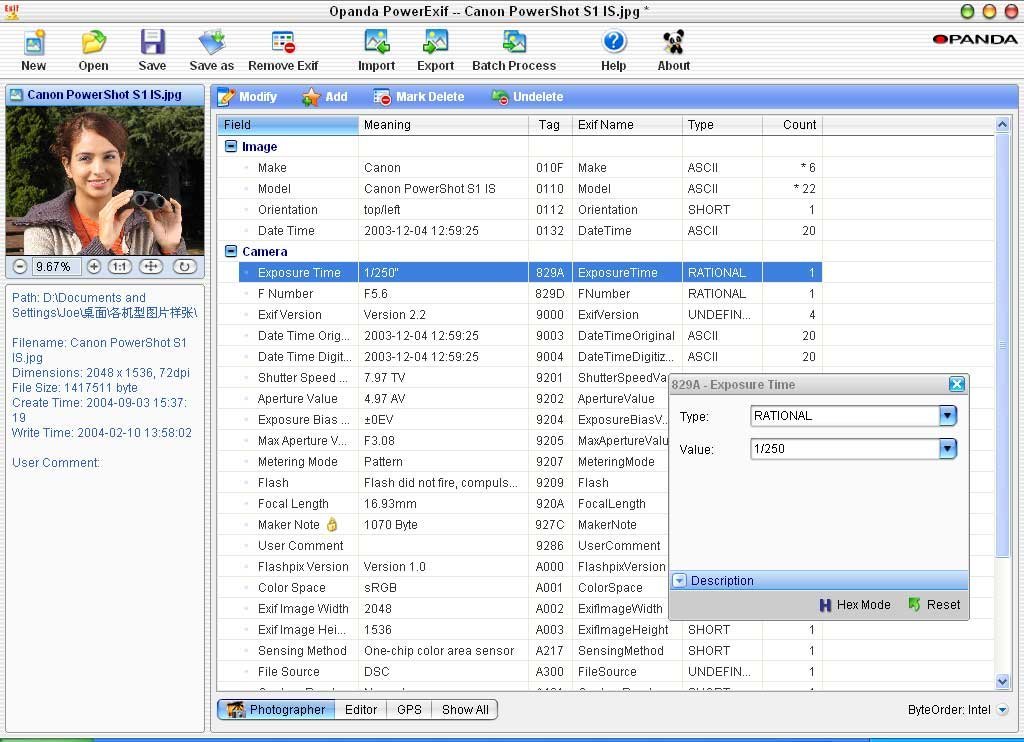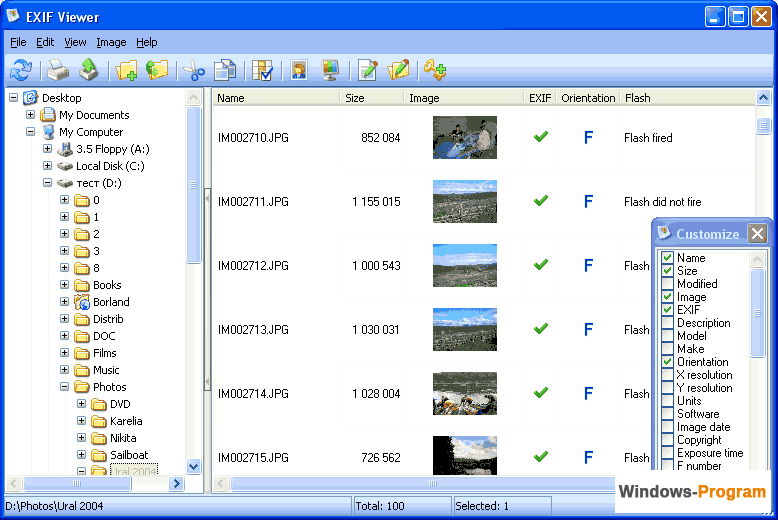

- #EXIF EDITOR FOR WINDOWS 10 HOW TO#
- #EXIF EDITOR FOR WINDOWS 10 FOR MAC#
- #EXIF EDITOR FOR WINDOWS 10 PROFESSIONAL#

You can access an image’s EXIF data from within its Properties Window by using Windows File Explorer while running the Windows operating system on your computer.
To view the image’s EXIF data, click the information button in the Inspector window. Select Show Inspector from the toolbar menu once Preview has been brought up on the screen by first selecting the tools item from the toolbar menu. Right-click the image you want to view, then select “open with preview app” from the menu that appears. Additionally, the user must use the Preview application to view an image’s complete EXIF data. Simply click on the More info Tab for more in-depth EXIF data at any time. The process above will bring up a dialogue box with data in which the user can see all the information needed. Right-click on the image you want to look at and choose to see the primary EXIF data. It will reveal all the data, including when the file was produced and when the user visited it, along with any advanced technical information. Or you can view the EXIF data and use the finder application that comes pre-installed with macOS. If you are using a Mac, you can view Exif data with AnyExif. You can modify all EXIF data, including the Original Timestamp, the Digitally Scanned Date / Location, and many more.  Map: It will display a map based on the GPS position.ĪnyEXIF read & extract all EXIF data included in the picture. Brief MetaData: In this location, it will display some basic EXIF info. Photo Preview: It will provide a preview of the image or photo that you have chosen. The photographs you choose are entirely up to you. File List: All files will be displayed in the “File List” section of the application. Folder List: this is where you’ll get a list of all imported folders. ToolBar: Includes all the tools you’ll need while altering or displaying EXIF data for photos. As a newly-launched Exif editing software, it has its highlighted features. This program is easy-to-use because of its simple layout and hands-on tutorial document on its website.
Map: It will display a map based on the GPS position.ĪnyEXIF read & extract all EXIF data included in the picture. Brief MetaData: In this location, it will display some basic EXIF info. Photo Preview: It will provide a preview of the image or photo that you have chosen. The photographs you choose are entirely up to you. File List: All files will be displayed in the “File List” section of the application. Folder List: this is where you’ll get a list of all imported folders. ToolBar: Includes all the tools you’ll need while altering or displaying EXIF data for photos. As a newly-launched Exif editing software, it has its highlighted features. This program is easy-to-use because of its simple layout and hands-on tutorial document on its website. #EXIF EDITOR FOR WINDOWS 10 PROFESSIONAL#
This Mac application is a professional Exif Viewer, Creator, Cleaner, and Editor that allows you to manage, secure, and erase the exif and metadata information associated with your photos.
#EXIF EDITOR FOR WINDOWS 10 FOR MAC#
We’ve limited it down to the one EXIF editor below: AnyEXIFĪnyExif is designed for Mac users to edit Exif data on Mac computers. Which EXIF editor should we use to delete the EXIF metadata from the images? The listing must be less than it was before to remove EXIF data from photos on a Mac. As a result, rather than depending on these services, use picture EXIF tools to edit or remove EXIF.

Social media platforms often dismiss the EXIF metadata of ideas, but this isn’t always the case, which raises serious privacy concerns.
#EXIF EDITOR FOR WINDOWS 10 HOW TO#
One of the most important things to know about EXIF is how to change or remove the EXIF data before uploading images to a website. To make categorizing your photographs more accessible, photographers should learn to read and comprehend the EXIF format. To better organize your images, this feature makes it easy to sort through them based on specific image attributes. An EXIF file contains all the data about the images themselves, including the levels of exposure, the location where the shot was taken, and any settings you used when taking the photo. Every time you take a photo with a digital camera, the camera creates a whole new data file. Exif (Exchangeable Image Format) is a data format containing images’ information.








 0 kommentar(er)
0 kommentar(er)
